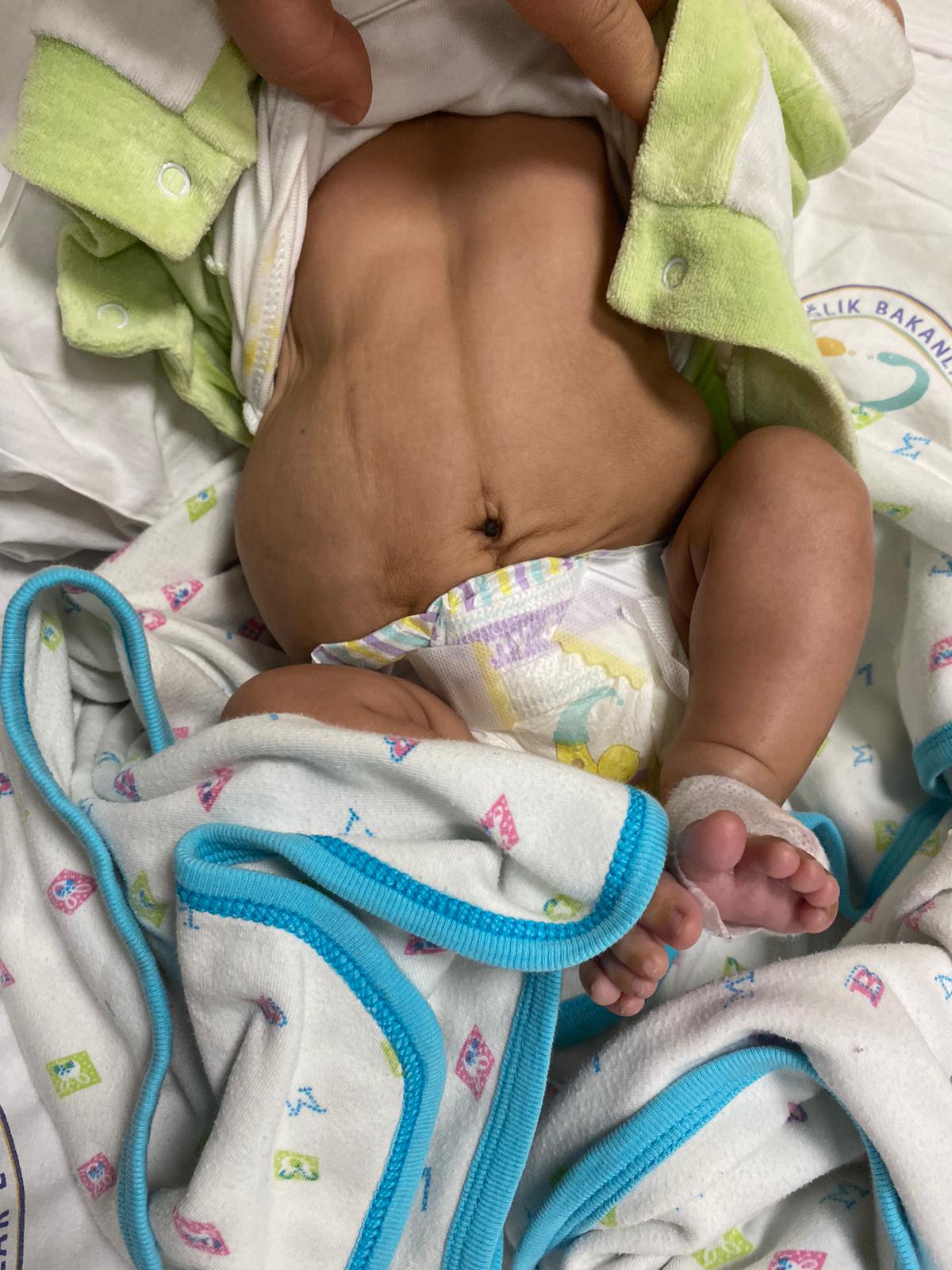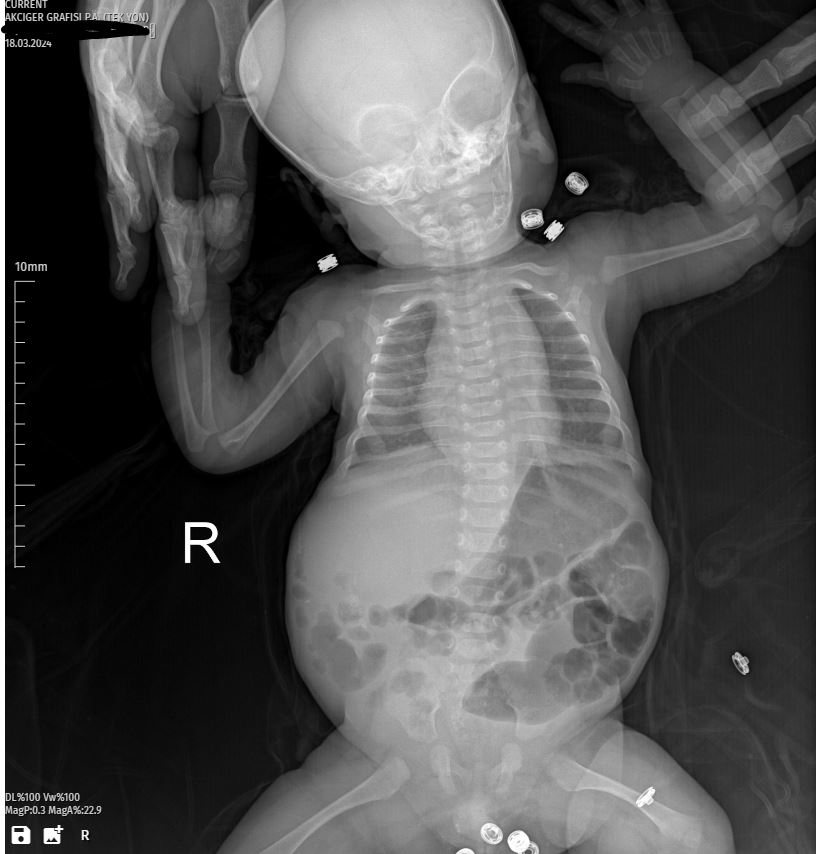
Prune Belly Syndrome (PBS), also known as Eagle-Barrett syndrome, is a rare congenital disorder characterized by a triad of abnormalities: deficient development of the abdominal muscles, urinary tract malformations, and undescended testicles (cryptorchidism) in males. This condition affects males more frequently than females, with varying degrees of severity.
Understanding the Causes
Genetic Factors
Research suggests that Prune Belly Syndrome may have a genetic component, although the exact genetic basis remains unclear. Mutations in certain genes involved in abdominal muscle development and urinary tract formation may contribute to the condition.
Environmental Factors
In addition to genetic factors, environmental influences during fetal development may play a role in the development of Prune Belly Syndrome. Factors such as maternal smoking, exposure to certain medications or toxins, and maternal infections during pregnancy have been implicated.
Signs and Symptoms
Distended Abdomen
One of the hallmark signs of Prune Belly Syndrome is a markedly distended abdomen, giving the appearance of a “prune-like” belly. This is due to the underdevelopment of abdominal muscles, leading to poor muscle tone and weakness.
Undescended Testicles
Many male infants with Prune Belly Syndrome have undescended testicles, a condition known as cryptorchidism. This occurs when one or both testicles fail to descend into the scrotum during fetal development.
Urinary Tract Abnormalities
Prune Belly Syndrome is often associated with a variety of urinary tract abnormalities, including hydronephrosis (enlargement of the kidneys), vesicoureteral reflux (backflow of urine from the bladder to the kidneys), and abnormalities of the ureters and bladder.
Diagnosis and Medical Evaluation
Prenatal Ultrasound
Prune Belly Syndrome may be detected during routine prenatal ultrasound screenings, which may reveal abnormalities such as a distended bladder, hydronephrosis, or absent abdominal wall musculature.
Physical Examination
After birth, a thorough physical examination will be conducted to assess for characteristic signs of Prune Belly Syndrome, including the appearance of the abdomen and the presence of undescended testicles.
Imaging Tests
Additional imaging studies, such as ultrasound, MRI, or CT scans, may be performed to further evaluate the extent of urinary tract abnormalities and to guide treatment planning.
Treatment Options
Surgical Interventions
Surgery is often required to address the abdominal wall defects and urinary tract abnormalities associated with Prune Belly Syndrome. Surgical procedures may include abdominal wall reconstruction, orchidopexy (surgical correction of undescended testicles), and urinary tract reconstruction.
Management of Complications
In addition to surgical interventions, management of complications such as urinary tract infections, renal dysfunction, and gastrointestinal issues may be necessary. This may involve medications, dietary modifications, and ongoing monitoring by a multidisciplinary team of healthcare professionals.
Prognosis and Long-term Outlook
The prognosis for individuals with Prune Belly Syndrome varies depending on the severity of the condition and the presence of associated complications. With appropriate medical care and interventions, many individuals can lead relatively healthy lives, although long-term follow-up is often necessary.
Support and Resources for Families
Families affected by Prune Belly Syndrome may benefit from access to support groups, online forums, and resources provided by organizations such as the Prune Belly Syndrome Network. These resources can offer valuable information, emotional support, and connections with other families facing similar challenges.
Current Research and Advances
Ongoing research into the genetic and environmental factors underlying Prune Belly Syndrome, as well as advances in surgical techniques and medical management, continue to improve our understanding and treatment of this rare condition.
Prevention Strategies
Since the exact cause of Prune Belly Syndrome is not fully understood, prevention strategies are limited. However, avoiding known risk factors such as smoking and exposure to certain medications or toxins during pregnancy may help reduce the risk of congenital anomalies.
Living with Prune Belly Syndrome
Living with Prune Belly Syndrome can present unique challenges, but with appropriate medical care, support, and resources, individuals with the condition can lead fulfilling lives. It is important for individuals with Prune Belly Syndrome and their families to work closely with healthcare providers to manage the condition effectively.
The Emotional Impact
Coping with a diagnosis of Prune Belly Syndrome can be emotionally challenging for families. Feelings of uncertainty, fear, and grief are common, but connecting with others who have shared experiences and accessing support services can help alleviate some of these emotional burdens.
Case Studies and Personal Stories
Sharing personal stories and experiences of individuals living with Prune Belly Syndrome and their families can provide valuable insights and inspiration to others facing similar challenges. These stories highlight the resilience, strength, and courage of individuals affected by this condition.
Expert Insights and Recommendations
Consulting with healthcare professionals who specialize in the management of Prune Belly Syndrome can provide valuable insights and recommendations tailored to the individual needs of patients and their families. Regular follow-up appointments and ongoing communication with healthcare providers are essential for optimal care.
Myths and Misconceptions
There are many myths and misconceptions surrounding Prune Belly Syndrome, including beliefs about its causes, treatment options, and prognosis. It is important to rely on accurate, evidence-based information and to consult with healthcare professionals for guidance and support.
Conclusion
Prune Belly Syndrome is a rare congenital disorder characterized by abdominal muscle deficiency, urinary tract malformations, and undescended testicles. While the exact cause of the condition remains unclear, ongoing research and advances in medical care continue to improve outcomes for affected individuals. With comprehensive management and support, individuals with Prune Belly Syndrome can lead fulfilling lives despite the challenges they may face.
FAQs
- Is Prune Belly Syndrome hereditary?
- While there may be a genetic component to Prune Belly Syndrome, the exact inheritance pattern is not well understood.
- Can Prune Belly Syndrome be detected before birth?
- Yes, Prune Belly Syndrome may be detected during routine prenatal ultrasound screenings.
- What are the treatment options for Prune Belly Syndrome?
- Treatment may involve surgical interventions to address abdominal wall defects and urinary tract abnormalities, as well as management of associated complications.
- What is the long-term outlook for individuals with Prune Belly Syndrome?
- The prognosis varies depending on the severity of the condition and the presence of complications, but with appropriate medical care, many individuals can lead relatively healthy lives.
- Where can families affected by Prune Belly Syndrome find support?
- Families can find support through organizations such as the Prune Belly Syndrome Network, which offers resources, information, and connections with other families facing similar challenges.
In Prune Belly Syndrome, the abdomen typically appears markedly distended and wrinkled, resembling the texture of a prune. This distinctive appearance is due to the partial or complete absence of abdominal muscles, leading to laxity and sagging of the abdominal wall. As a result, the abdominal contents may protrude outward, giving the abdomen a visibly enlarged and asymmetrical appearance.
The absence of muscle tone in the abdominal wall can also result in poor abdominal wall function, leading to difficulties with activities such as sitting upright or maintaining posture. Additionally, the abdominal distention may contribute to gastrointestinal symptoms such as constipation and gastroesophageal reflux.
It’s important to note that the severity of abdominal abnormalities can vary among individuals with Prune Belly Syndrome, and not all cases will present with the same degree of distention or wrinkling. Furthermore, the appearance of the abdomen may evolve over time, particularly with surgical interventions aimed at addressing abdominal wall deficiencies.
For accurate clinical assessment and diagnosis, individuals suspected of having Prune Belly Syndrome should undergo thorough physical examination by a qualified healthcare professional, often complemented by imaging studies such as ultrasound or MRI to evaluate the abdominal anatomy in detail.
In an X-ray image of a baby with Prune Belly Syndrome, several characteristic findings may be present:
- Abdominal Distention: The X-ray may reveal significant abdominal distention, indicating the presence of gas and stool within the intestines. This distention may be more pronounced in the upper abdomen due to the absence or weakness of the abdominal muscles.
- Skeletal Abnormalities: Prune Belly Syndrome can be associated with skeletal abnormalities, including abnormalities of the ribs and vertebral column. These abnormalities may be visible on the X-ray as irregularities or anomalies in bone structure.
- Genitourinary Abnormalities: X-ray imaging may also provide insights into genitourinary abnormalities commonly associated with Prune Belly Syndrome, such as undescended testes (cryptorchidism) or abnormalities of the urinary tract. These findings may not always be clearly visible on X-ray and may require additional imaging modalities for detailed evaluation.
- Soft Tissue Abnormalities: The X-ray may demonstrate abnormalities of soft tissues, including the characteristic lack of muscle tone and weakness of the abdominal wall muscles. This may manifest as a “prune-like” appearance of the abdomen, with a visibly distended and wrinkled appearance.
It’s important to note that while X-ray imaging can provide valuable information about the structural abnormalities associated with Prune Belly Syndrome, it may not capture all aspects of the condition. Additional imaging studies, such as ultrasound or MRI, may be necessary to further evaluate specific anatomical features and guide clinical management. Interpretation of X-ray images should be performed by qualified medical professionals familiar with the condition and its diagnostic challenges.
